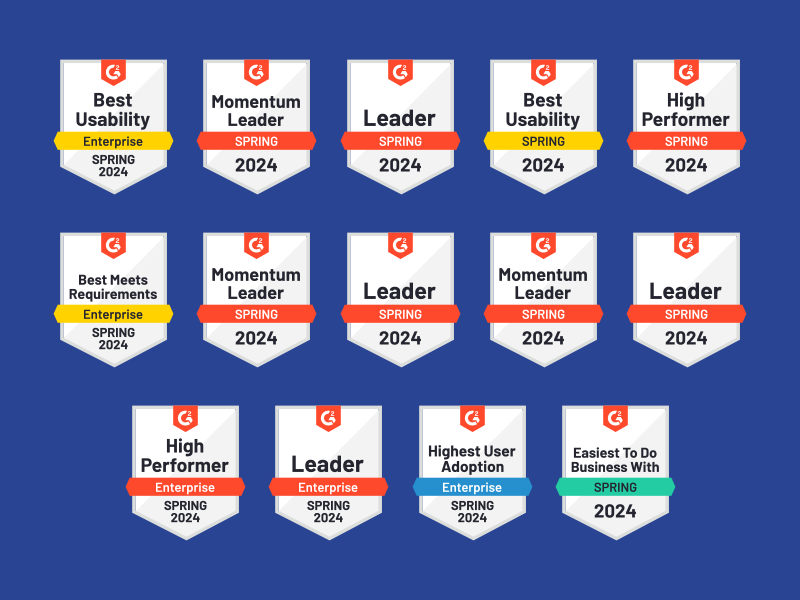Accenture, a Fortune Global 500 company, recently informed its employees that next month it will cease both annual performance reviews and its internal peer ranking system. It’s a growing trend, and the list of companies that have made similar announcements may surprise you. That list includes Adobe, Microsoft, Expedia, Motorola, and Juniper Networks.
Prompted by studies such as one from management research group, Corporate Executive Board (CEB) which show 95 percent of managers are dissatisfied with their performance management systems, and 90 percent of human resource managers believe they do not yield accurate information; the shift away from the annual performance review is set to continue. Annual reviews are being replaced with more fluid and frequent processes, and management teams are seeking more meaningful ways to benchmark employee performance.
What’s really behind the move to nix annual performance reviews and what does it mean for employee relations?
1. Annual performance reviews are neither timely nor accurate
Scrapping the annual performance review is a headline grab for sure, and the trend is symptomatic of a growing concern over the inefficiency inherent in trying to discuss an employee’s entire performance for the year in a single meeting. Many organizations compound the burdensome process by demanding lengthy, written evaluations for each member of staff. Left to year-end, some of the management comments, which become the basis for evaluation can be almost arbitrary. Even if a manager is proficient at keeping track of key events and issues over the course of the year, much will be forgotten. Employees too can be at a distinct disadvantage and may not recall the circumstances surrounding questions about their own performance or underperformance.
For employee relations, it means that companies are moving towards more frequent, fluid dialogues with their employees. There will be more interactive performance discussions and they will occur several times during the year. One advantage for employees is that the stigma and anxiety that surrounds a year-end review will lessen. Frequent conversations can be timely and productive. The dialogue will remain focused on current initiatives, not ones that occurred many months before. At Adobe, these types of meetings are referred to as “Check-ins,” and the company continuously provides resources for both managers and employees to build the success of the Check-in initiative.
More frequent discussions on performance should not go undocumented. The more informal format can still be supported by documentation with managers noting the date and time of the conversation as well as key discussion points. These types of notes can be done by a manager after the performance check-in is complete so as not to interrupt the flow of the conversation. The documentation should also include feedback received from the employee, actions taken by the manager based upon the discussion and be sent to human resources.
According to CEB, 95% of managers are dissatisfied with their performance management systems, and 90% of human resource managers believe they do not yield accurate information.
2. Performance review rating systems can demotivate employees
To give the annual performance review credibility, firms have adopted different performance criteria and techniques, often numerically-based. One example is stack ranking or employee profiling. It is the process of ranking employees against their peers in the performance review process. There are different ranking categories, and managers must distribute their employees amongst the categories forcing relative comparisons of co-workers. One of the benefits touted of a stack ranking culture is that managers must compare members of their team as opposed to just giving everyone a similar ranking. It forces a manager to identify underperformers and address the reasons for the underperformance – in this system, everyone can’t be great.
Instead of motivating employees and creating a team culture, employee profiling often has exactly the opposite effect. It can lead to individual competitiveness amongst members of the same team as well as information hoarding. In the recent New York Times article on Amazon, a former employee said, “Because team members are ranked, and those at the bottom eliminated every year, it is in everyone’s interest to outperform everyone else.” If employees that fall to the bottom of the rankings are worried about their job security, they may actively seek to leave the company. That type of consistent churn, even among underperformers, will drain corporate knowledge.
Using methods like the balanced scorecard, management teams can include nonfinancial performance criteria in the performance review process, such as adhering to the company’s core values.
For employee relations, it means that organizations are looking for more meaningful ways to qualitatively benchmark employee performance. Just one example is the balanced scorecard method, through which management teams can include nonfinancial performance criteria important to the company such as adhering to the company’s core values. Some companies are even using this approach to gather performance feedback from clients as well as peers.
3. Constructive criticism proves not to be constructive after all
The traditional annual performance review is often fashioned around constructive criticism, criticism framed in a way that it guides the employee on how to do better. Constructive criticism is advice meant to be “useful” and often takes the form of a list of pointers or actions which outline how the employee can improve performance.
The negative effects of a review process built on constructive criticism reverberate through companies long after the review process has ended. Employees can feel demoralized and disengage. Primarily for that reason, some organizations experience turnover in the period that follows the annual review process.
For employee relations, companies will continue to move away from annual reviews that simply give employees guidance on how to do better. Instead, managers will be taught to coach and mentor employees. In numerous surveys, employees and millennials in particular, make it clear that they value the opportunity to grow and advance in the workplace. In You Can’t Be a Great Manager If You’re Not a Good Coach, Monique Valcour, explains why “…the most important thing you can do each day is to help your team members experience progress at meaningful work.” Coaching and a mentorship culture motivate employees and bolster engagement, and they can build collaborative relationships for a stronger workplace.
Nixing the annual performance review makes sense if it is replaced by a thoughtful evaluation process that is based on dialogue and collaboration.
To the extent that these types of conversations or “check-ins” are happening several times throughout the year, even better. Juniper Networks, for example, saw reduced turnover by eliminating the performance review and replacing it with “conversation day.” Similarly, Adobe has seen voluntary attrition decline 30% since the check-in format for performance management was put in place.
The performance management solution that works for each company will differ. When changing the way employees are reviewed, the key is to be mindful of what you are trying to achieve, establish credible benchmarks, retain a documentation process, and manage the change. Your employees will thank you for it.



